When your Honda Foreman ATV is not producing spark while cranking, it could be due to a variety of reasons.
The most common reason for a Honda Foreman or any ATV to have no spark while cranking is typically a fault with the spark plug.
Spark plugs can become fouled or damaged over time, especially in off-road vehicles that are subjected to harsh conditions. Checking and replacing the spark plug is a good first step in troubleshooting the issue.
If not, then check the voltage regulator. These regulators have consistently been a problem for no-fire situations. There are many others who are in the same situation on the forums, you won’t even have to search for them long enough.
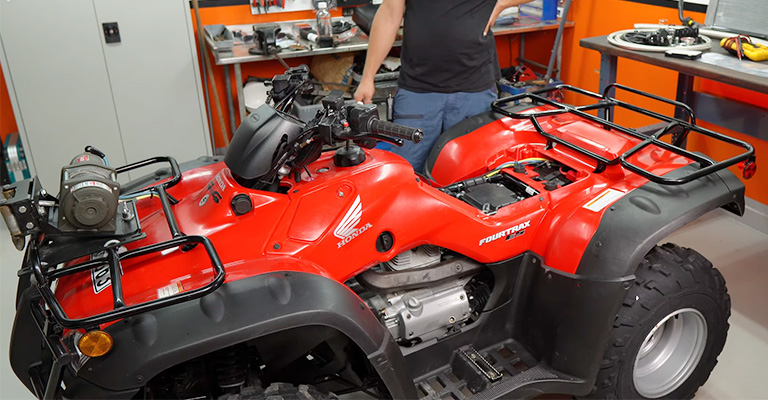
Cranking in Honda Foreman
To dive deeper into the subject, first, let’s begin with cranking in Honda Foreman.
In short, cranking involves the process of starting the engine of your Honda Foreman. It is the primary action you need to get your engine running.
A bit of detail,
When you turn on the ignition key or press the start button, the starter motor engages with the engine’s flywheel.
The flywheel is a heavy disc, attached to the bottom of the rotating shaft. The sequence of action triggers the engine’s rotation and ignites the fuel-air mixture to start the combustion process.
Ultimately, the Foreman engine begins to run on its own.
In case you are experiencing, the “no spark while cranking” issue, it indicates that your Honda Foreman engine is not creating enough spark to ignite the fuel-air mixture.
Thus, it prevents the engine from starting.
The Issue: Honda Foreman No Spark While Cranking
Many factors can work behind a no-spark situation. But some frequent ones are,
1) Faulty Ignition Coil

In any ATV, the ignition coil generates the spark and ignites the fuel-air mixture. It is almost square in shape and essentially converts the 12V power supply to 25-30,000 volts as you start the combustion.
When there is a malfunction or damage in the ignition coil, it will not produce any necessary spark during the cranking.
2) Faulty Spark Plug
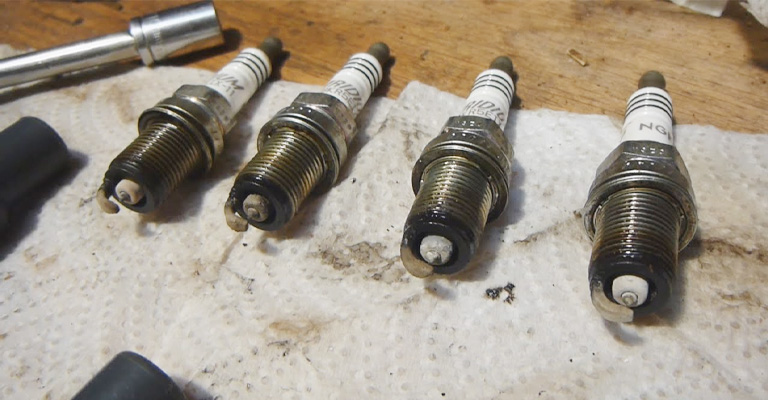
A worn-out or fouled spark plug will fail to produce a spark. Usually, a copper spark plug is used due to its high performance.
It combines a central electrode and a ground electrode, and the distance between them defines an effective ignition.
In case, the electrodes are damaged or coated in carbon deposits, it can prevent ignition. How to get rid of such a situation? Continue reading, you will find out.
3) CDI Is Disrupted
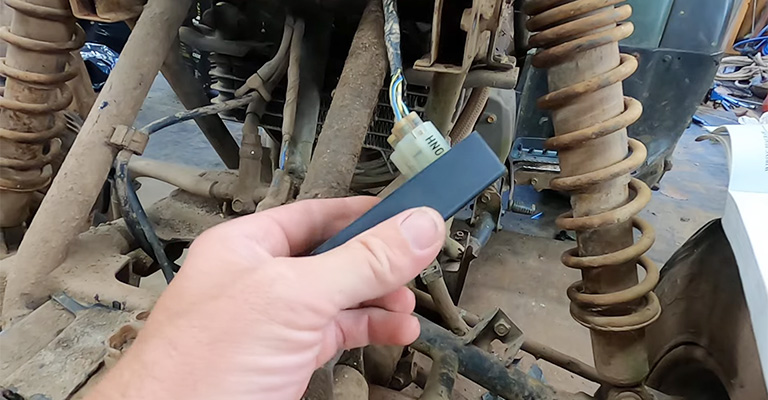
The capacitor discharge ignition, a.k.a CDI unit maintains the timing of the spark. Consider it the battery that stores energy for later and releases it on time.
Occasionally, you may end up with damaged CDI. A faulty CDI will provide the wrong timing for the spark. Hence, even though the spark initiates, at the wrong time, no ignition starts to trigger the combustion.
4) Defective Stator or Pulse Generator
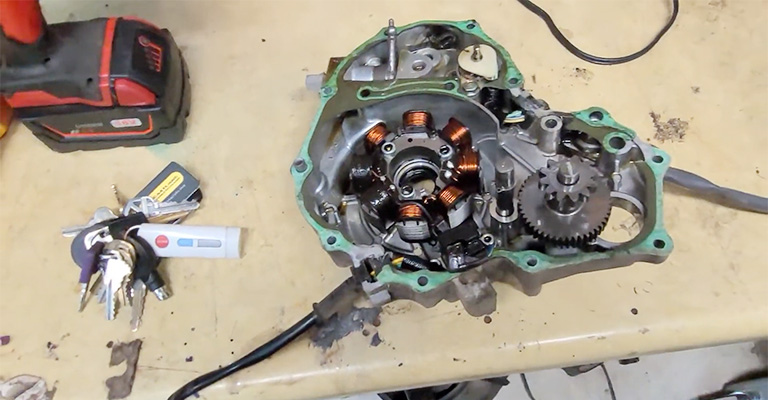
As the Foreman engine’s crankshaft rotates, the stator remains fixed and generates alternating current (AC) electricity. On the other hand, the pulse generator, also known as the pickup coil or trigger coil, is one kind of stator coil.
It reports to the crankshaft about the right timing for the ignition system. And, generates electrical pulses based on the rotation of the engine’s crankshaft.
The CDI (Capacitor Discharge Ignition) unit then, receives the pulse and uses the information to precisely control the ignition spark timing.
The stator or the Pulse Generator can often get disturbed due to different reasons. And, when this happens, there might not be enough power to generate the spark.
5) Wiring And Switch Malfunction
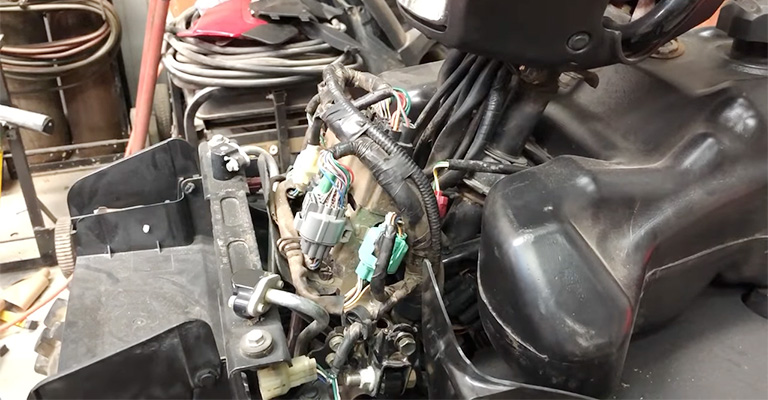
Any damage or corrosion in the wiring or between two terminals can disrupt the flow of electricity. And when you have a damaged hole in the wiring system, it will prevent the ignition system from functioning properly.
On the other hand, the ignition switch completes the circuit that delivers voltage to the starter motor. The engine then cranks over and eventually starts.
If the switch is disrupted or clogged, the circuit will not be complete and hence, the ignition process will not start.
Note, sometimes, a simple oversight like leaving the kill switch in the “off” position can prevent the ATV from producing a spark and starting.
6) Safety Interlocks in Action
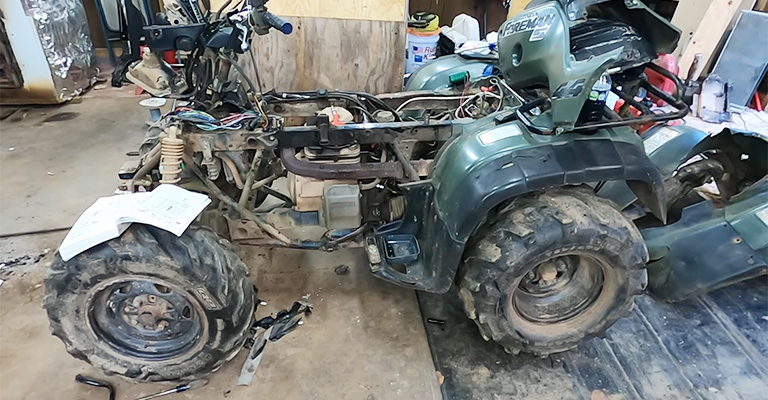
Most Foreman models have safety interlocks. The interlocks are a smart trick to prevent your ATV from getting stolen. It can even shut down your Honda Foreman if necessary.
The safety interlock in the ATV features prevents ignition when certain conditions are not met, such as the brakes not being engaged or the ATV being in neutral.
In such scenarios, you may end up with no spark at all.
Troubleshooting Begins,
The solution varies depending on the type of trouble your Honda Foreman is in. We have narrowed down the steps you should take for different case scenarios.
- It is wise to regularly examine the spark plug and look for any damage if this is the case. You can clean or replace the spark plug if necessary.
- Have a multimeter to test the ignition coil’s output. If it’s not producing the required electrical output, consider replacing the coil.
- If possible, test the CDI unit according to your Foreman’s service manual. Upon detecting the fault, consult a professional mechanic.
- You can also measure the output of the stator or the pulse generator. If the readings are abnormal, consult a mechanic, or a replacement can be the solution.
- Regularly, inspect the wiring and terminals for damage or corrosion. Plus, also test the ignition switch with a multimeter to find out if it’s functioning correctly.
- Keep the kill switch in the On position and ensure all the safety interlock conditions are met.
If you’re unable to identify the issue or resolve it on your own, we advise you to consult a professional mechanic or follow the Honda Foreman’s service manual for further guidance.
We understand, electrical or mechanical issues can sometimes become complex. In such events, the wisest decision is to consult a professional expert to fix the problem accurately.
If you are unable to diagnose the issue or resolve it yourself, it’s advisable to consult a certified mechanic or an authorized Honda service center.
They will have the necessary expertise and diagnostic tools to identify the problem accurately and provide a suitable solution.

Leave a Reply